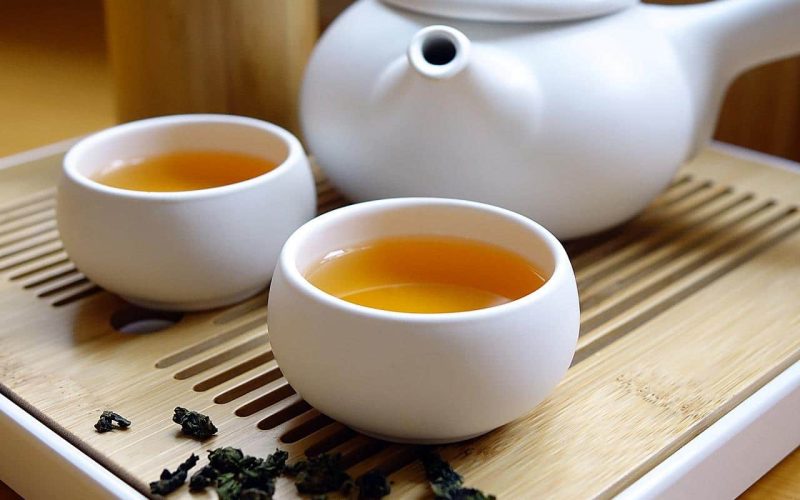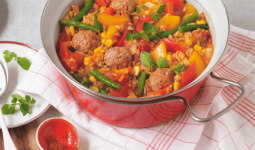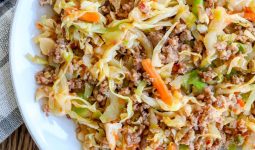Have you tried some of the traditional Chinese drinks before? When many people in the world’s most populous country are thirsty, they turn to tea and hot water, but other options are. In China, alcoholic and kid-friendly drinks are never in short supply.
The country is brimming with one-of-a-kind cocktails that You can’t find anywhere else. Simultaneously, many of the country’s favorite beverages are imported outside and adapted to the local palate. This article will go through every form of traditional Chinese drinks you should know.
China has a wide variety of intriguing yet delicious beverages that can be consumed alone or in conjunction with a meal.
From soothing tea to alcoholic beverages, there’s something for everyone. Here are some of the traditional Chinese drinks you should try.
1. White Tea
Sun-dried or heated until fuzzy but still light green, those soft, delicate shoots are sun-dried or heated. To achieve the finest flavor from the Fujian province tree and health advantages, you should brew it with water below 85°C, where the water is hot but not frothy.
White tea has a floral smell and a somewhat sweet flavor. Because it is so mild, adding sugar or milk to the tea is not recommended.
By looking at its attractive pale yellow color and inhaling its herbal scent, you may visualize an emerald sea of tea hills thriving in the springtime.
White tea comes in various flavors, including monkey-picked (not harvested by monkeys), silver needle, and white peony. They’re all pricey, but they’re all worth every penny.
2. Black Tea
The black appearance of the tea’s withered, brittle leaves gives it its name. The powerful substance it creates, on the other hand, can range in hue from pale amber to dark orange. It will become darker and more forceful as its oxidation level rises.
While black tea is made from the same tea plant, Camellia sinensis, as other varieties. It is distinguished by the severe fermentation and drying process. However, the Chinese call it dark tea or fermented tea to distinguish it from fermented tea.
For generations, black tea has been a staple of Chinese tea culture. Countless generations have savored the tea’s rich and varied flavor, which can be fruity, earthy, or malty.
Furthermore, Another advantage is that this kind is adaptable, meaning You may mix it with other beverages such as milk.
There are three primary types of black tea, each of which is subdivided into subcategories with varying tastes and prices. Whether you prefer Xiao Zhong, Gongfu, or broken black tea, you can have it all. This is one of the traditional Chinese drinks.
3. Green Tea
This simple drink pairs well with a variety of traditional Asian dishes. A Chinese lunch is no different. Green tea has been the most popular type of tea in China for millennia, dating back to the reign of the mythical Emperor Shennong.
Unlike other types of tea that go through a lengthy oxidation process, green tea is merely briefly pan-fried before steeping in hot water. The finished beverage has a vibrant green color and a grassy flavor reminiscent of freshly cut grasses.
While boiling green tea appears straightforward, different types necessitate different approaches. As a general rule, high-quality tea requires cooler water and a shorter steeping time than inferior tea. Otherwise, the tea’s green sweetness would become bitter.
4. Oolong Tea
Oolong tea is a semi-oxidized beverage between green and black tea. It comes in various shapes and hues, depending on how the tea is dried and roasted. Also, low oxidation products generate tea with vibrant colors and a sweet aroma, similar to green tea.
On the other hand, oolong tea that has been oxidized more than 50% has a stronger resemblance to black tea. After brewing it, you’ll get a nutty-tasting tea with deep brown or orange colors.
Adjusting the oxidation is a time-consuming process that increases the cost of oolong tea production. The good news is that oolong is one of the healthiest tea varieties available. It can, for example, aid weight loss by containing antioxidants that melt fat and lower food cravings.
5. Tie Guan Yi
Tie Guan Yin, often known as the “Iron Goddess of Mercy,” is a fantastic drink for those with a large wallet. It belongs to the oolong tea family. Around the turn of the century, this high-end product initially appeared in Anxi, Fujian.
According to legend, a poor local farmer dutifully revered an iron statue of Guan Yin (Chinese Goddess of Mercy). Also, the Goddess provided him with a treasure site with a tea shoot as a reward. The peasant grew it, sold it, and retired to a comfortable life.
With just one sip of Tie Guan Yin, you’ll understand why it’s been dubbed “treasure.” The floral scent and sweet, berry-like aroma are a sheer delight in a liquid form.
6. Chrysanthemum Tea
Many Chinese drinks are packed with delicious flavors and nutrient-dense ingredients. Take, for example, chrysanthemum tea, which is high in disease-fighting elements including potassium, magnesium, and phosphorus.
Unlike the other types of tea, chrysanthemum tea is made using dried chrysanthemum flowers rather than tea leaves. People steep them in hot water till the tea turns yellow and has a floral aroma. If you add sugar to the cup, it will be much better.
Since the Song Dynasty, chrysanthemum tea has been a popular beverage. While it has numerous advantages, you should not take too much of it.
Or the tea may cause more harm than good. Usually, two or three servings per week suffice. This is one of the traditional Chinese drinks.
7. Pu’er Tea
Bacteria and dampness make most types of tea squirm. As nothing is more effective at destroying their prized tastes than these two. On the other hand, Pu’er tea (or pu-erh) from Yunnan Province in southwestern China is an exception.
Before appealing to the national taste. It was a favored drink among ethnic communities in the mountainous province. The tea results from an aging procedure that transforms dry tea into a delectable fermented tea.
Traditionally, it takes a long time for the flavor of Pu’er tea to fully develop. However, a few firms have devised procedures that significantly speed up the process. Tea can be packaged in various ways, including cakes, bricks, and mushrooms.
Furthermore, While most people are familiar with ripe (fermented) Pu’er tea, raw (non-fermented) Pu’er tea is also available.
Both have a yellow or reddish-brown appearance and a sweet, rotten flavor. Many sellers blend their wares with local herbs or spices for a more exotic feel.
8. Kombucha
What would you do if you woke up one morning with a severe sore throat? If Kombucha is your favorite beverage, you won’t need antibiotics. It is thought to have originated in ancient China and then spread to Europe.
Although the drink is Chinese in origin, the popular term “Kombucha” appears to be a Japanese borrowing word. In China, it’s known as “hong cha jun,” which translates to “black tea mushroom.”
Kombucha is a fermented black or green tea high in vitamins (or both). SCOBY is the driving force behind this development (symbiotic culture of bacteria and yeast). Foodies make this drink by culturing the bacteria in a bottle of sweet tea and storing it for weeks.
Furthermore, the drink is commonly referred to as “Kombucha tea.” This is ironic since, if the culture spreads too far, the drink will become too alcoholic for children. As a result, you should keep a close eye on your culture.
However, in any case, your efforts will not go ignored. You’ll be struck by the amazing combination of sweetness and acidity when you open the bottle and sip the fuzzy, brown drink.
Which will beautifully boost your hunger. If you add spices and herbs, the flavor can be fruity. This is one of the traditional Chinese drinks.
9. Mijiu
Start with this one if you want to explore the enormous world of Chinese alcoholic beverages. Mijiu is an umbrella term that refers to various glutinous rice-derived wines.
It’s as essential to Chinese cuisine as sake or cheongju are to Japanese dishes or Korean delicacies. While there are many different types of Mijiu, they all have a spicy sweetness and a slight bitterness.
In addition, its typical alcohol concentration is usually between 15% and 20%. Mijiu, unlike Western wines, must be served warm.
10. Baijiu
It’s challenging to develop a national drink that captures the flavor of this 1.4 billion-strong country. But, if I had to identify a few contenders, Baijiu would be at the top of the list.
One explanation is that it is usually limited to China and Chinese populations in other countries. The strong, pungent aroma is difficult for most Westerners to fathom. After all, Baijiu is a potent beverage with an alcohol concentration ranging from 35 to 60 percent.
If you start small and put forth a genuine effort, you will discover a new side to the beverage. It’s a thick liquor made from fermented sorghum, wheat, sticky rice, or corn, among other things. This variety displays the drink’s intrinsic richness.
The taste of Baijiu is often described as “rotten fruit” by critics. On the other hand, this clear liquor can come in a variety of fragrances to suit everyone’s preferences.
11. Jiuniang
Jiuniang appears to be a soup at first glance. The second one’s pudding-like texture still makes you believe that. After tasting the milky-white, aromatic liquid, you realize it is sweet rice wine.
Jiuniang is made from glutinous rice and a yeast-based fermentation starter. Rice wine or rice vinegar can be produced due to the method.
However, to manufacture Jiuniang, locals must stop the process early, resulting in a negligible amount of alcohol (2 percent ).
Jiuniang is commonly served with light Chinese foods to aid digestion in China. Its slight sweetness and alcoholic flavor help to pique your interest. Remember to enjoy the liquid as well as the fluffy rice grains. This is one of the traditional Chinese drinks that you should try.
12. Osmanthus Wine
How can the Chinese make this enticingly scented and intoxicating drink out of poor rice liquor? The key is the osmanthus flower, which is pleasant and aromatic. The plant is also known as sweet olive or fragrant olive. And You may find it in various places in China.
As a result, infusing basic rice wine with osmanthus is simple. This cinnamon-scented herb will substantially enhance the wine’s flavor.
When the snowy, fragrant blossom is in full bloom. Osmanthus wine is the preferred beverage for birthday parties and the Mid-Autumn Festival.
Cassia wine is another name for this traditional drink wine. On the other hand, Cassia (Chinese cinnamon) has no place in the recipe. The name confusion is most likely because the two plants have the same Chinese sound.
13. Tsingtao Beer
What is the most widely consumed Chinese New Year beverage? Almost certainly, each region will have a distinct response. On the other hand, Tsingtao beer appears to be a nationwide winner. It is widespread in the country, accounting for roughly one-sixth of the domestic market.
The beer is trendy on a global scale. This product is imported into more than 90 nations and regions worldwide. Perhaps the beer’s bright gold color, strong malty fragrance, and well-balanced flavor appeal to a wide range of drinkers.
Tsingtao beer was created in 1903 by German settlers in Qingdao (Shandong Province), who established a brewery. The beer brand experienced its fair share of bad luck during China’s chaotic historical period before bouncing back to greatness. This is one of the traditional Chinese drinks.
14. Sinkiang Black Beer
Imagine yourself eating delicious Sichuan (“saliva chicken”) or sour glass noodles from China. What drink should you serve them to get the most enjoyment? Allow me to introduce you to Sinkiang black beer, also referred to as Xinjiang black beer.
This is a delicious drink from Xinjiang, a beautiful region in northwest China. The local ethnic people produced it to match their spice-laden cuisine. This is why it goes so well with hot meals.
The black beer’s primary component is indigenous hops, which have a peculiar flavor due to the region’s unique environment.
With its nut-scented aroma and rich sweetness, Sinkiang black beer is excessively drunk. It’s a lot like Western dark larger, but it’s even more unique and pleasant. This is one of the traditional Chinese drinks.
Pearl Milk Tea
This Taiwanese import, which features jelly or pudding-like bubbles in sweetened milk tea, is one of the most popular soft beverages among young people in mainland China.
Soybean Milk
China’s version of the protein shake is made with yellow wheat beans. The popular drink is described as “extremely natural. And a little sweet” by Ma Xin, a Weibo coordinator from the Qinghai region.
“When you mix different beans, you get a new flavor,” she explains.
Furthermore, a milk machine is mainly used to make the drink at home. However, most breakfast booths sell fresh, boiled versions, which can be served sweet or savory.
Coconut Milk
The meat of the coconut is used to make canned coconut milk in China. It has a thicker viscosity than conventional coconut water because of the addition of milk, water, and sugar.
Yunnan Coffee
Almost all Chinese coffee nowadays comes from Yunnan Province. This southwestern province boasts diverse plant life, fertile soil, and a pleasant climate.
As a result, the tropical coffee tree thrives here, providing the Chinese with their cup of caffeinated delight. Yunnan residents grow a variety of coffee kinds, including Arabica Catimor, Typica, and Bourbon.
They yield fruits with a delightful aroma and a luscious sweetness that is just right. Furthermore, Yunnan coffee is so good that it’s used at all Starbuck locations in mainland China.
Since 2012, numerous Starbuck fans have been charmed by the cinnamon-flavored beans provided by Aini. One of the most prominent Chinese coffee brands. This is one of the traditional Chinese drinks.
Bubble Tea
Tea, milk, and chewy tapioca pearls form a creamy bubble teacup. The recipe appears straightforward, but the possibilities are unlimited because you can make the drink with any tea and milk.
However, black tea is the most popular option when it comes to tea. Its pleasantly bitter flavor blends perfectly with milk’s fatty and sweet flavor, resulting in a lethal combo. Oolong tea and scented green teas, particularly matcha, are also delicious.
Whole milk is the best choice for bubble tea because of its richness when it comes to milk. Those concerned about their weight can switch to skim milk, soy milk, or coconut milk. Those ingredients will give your tea a delicious flavor boost.
Suanmeitang
This cooling and calming beverage goes well with hot pot and spicy Chinese cuisine. The sour-sweet flavor soothes a burning tongue and stomach—sweet osmanthus, sour plums, hawthorn, licorice root, rock salt, and sour plums.
Kvass
The sweet alcoholic drink was brought to northern China by the Russians in the 19th century. And it has remained iconic homebrew in the region, particularly in Xinjiang and Harbin. This beer is brewed from rye or black bread and is often flavored with herbs, mint, raisins, or strawberries.








